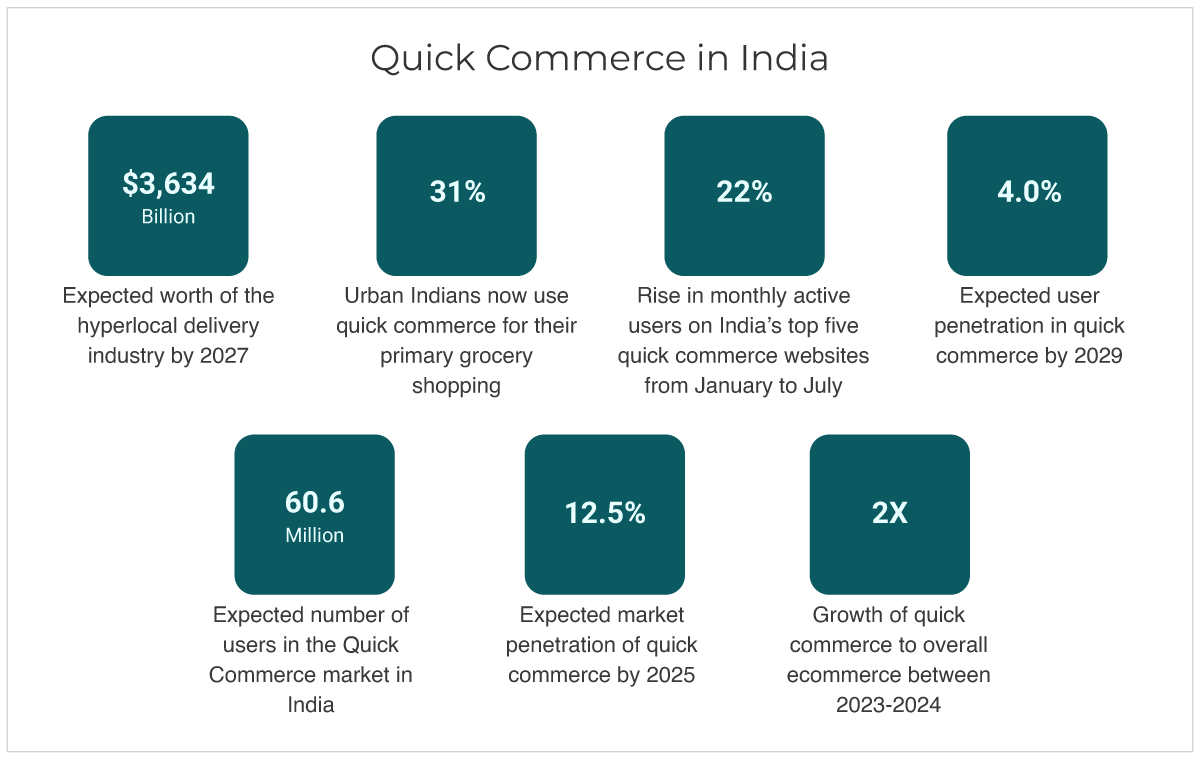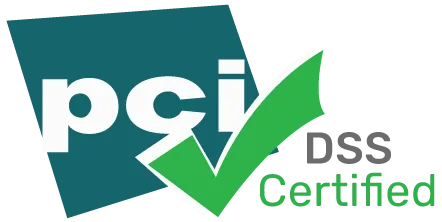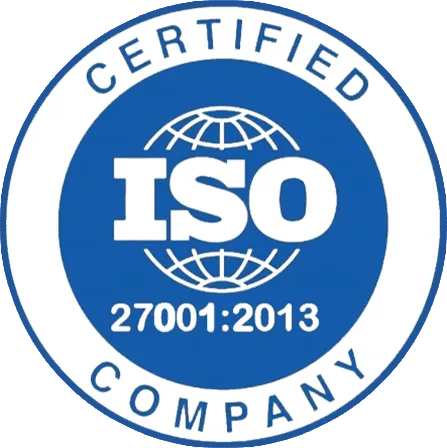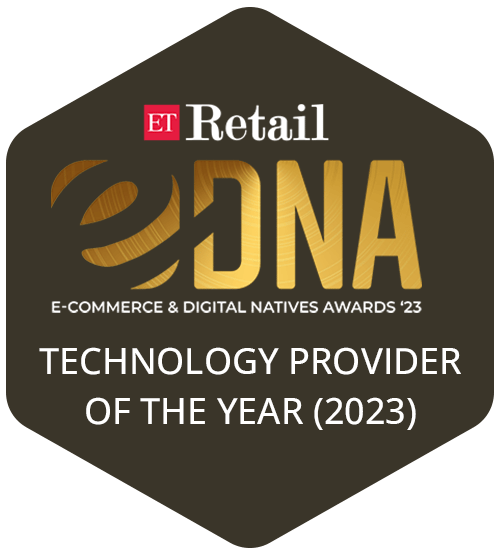In today’s fast-paced retail environment, consumer expectations are higher than ever, especially when it comes to convenience and speed.
For enterprise FMCG brands, pivoting to quick commerce isn’t just a trend—it’s a strategic move to stay relevant.
Imagine reaching your customers in minutes rather than days, providing instant access to essential products right when they’re needed.
Quick commerce is all about faster deliveries.
Hyperlocal ecommerce offers FMCG brands the agility to meet demand swiftly, build stronger customer loyalty, and stay ahead of the competition.
Curious about why this shift could be a game-changer for your brand?
Let’s explore why now is the perfect time for enterprise FMCG brands to embrace quick commerce.
Table of Contents
- Quick Commerce in India: Ecommerce Trends
- Why Enterprise FMCG Brands Should Pivot To Quick Commerce
- 1. Growing Consumer Demand For Speed
- 2. Competitive Advantage
- 3. Increased Customer Loyalty
- 4. Evolving Shopping Habits
- 5. Reduced Dependency on Traditional Retail
- 6. Increased Market Penetration
- 7. Technological Advancements
- 8. Boost In Impulse Purchases
- 9. Sustainability and Hyperlocal Sourcing
- 10. Adaptability to Market Disruptions
- How StoreHippo Helps FMCG Brands Pivot To Quick Commerce with Dealer Powered Marketplace
- Conclusion
- FAQ
- 1. How much time will it take to build an FMCG quick commerce marketplace?
- 2. What will be the cost of developing quick commerce apps?
- 3. How many plugins will be needed to manage the vendors and the location-based sub stores for our FMCG brand?
- 4. Can I have a multilingual FMCG hyperlocal ecommerce website and apps for different buyer segments?
- 5. Will it possible to onboard and manage our vendors’ delivery fleet to our FMCG hyperlocal marketplace?
- 6. What apps or features are needed for flash deals or time-bound discounts for quick commerce?
- 7. Can I set minimum order quantities on my FMCG Quick commerce marketplace?
Quick Commerce in India: Ecommerce Trends
Before we dive into the pool of benefits, let us first take a look at the quick commerce trends:

- $ 3,634 billion is the expected worth of the hyperlocal delivery industry by 2027
- 31% of urban Indians now use quick commerce for their primary grocery shopping
- 22% rise in monthly active users on India’s top five quick commerce websites from January to July
- 4.0% is the expected user penetration in quick commerce by 2029
- 60.6 m is the expected number of users in the Quick Commerce market in India
- 12.5% is the expected market penetration of quick commerce by 2025
- 2X growth of quick commerce to overall ecommerce between 2023-2024
Source: Statists, ET Retail
The rapid growth of quick commerce platforms has taken the ecommerce market by storm. Shoppers today are discerning, price conscious and look for convenience when shopping online. The rise in quick commerce usage signals the need for FMCG brands to prioritize customers’s ease and speedy delivery.
Why Enterprise FMCG Brands Should Pivot To Quick Commerce
The shopper's expectations are at an all-time high. By embracing quick commerce, you can not only meet the demand for instant delivery but also enhance customer loyalty, access valuable consumer data, and capture new market segments.
Let us see how pivoting to a q-commerce model can give you a competitive edge and help stay aligned with consumer expectations.
1. Growing Consumer Demand For Speed
Shoppers today are increasingly accustomed to fast, seamless service, and expectations for delivery speed are higher than ever. Speed has become a defining factor in purchase decisions, and brands that don’t offer this convenience risk losing customers to more agile competitors.
Thanks to quick commerce which promises delivery within minutes or a few hours. To help FMCG brands align with consumer preferences for immediacy, particularly in categories like groceries, personal care, and household products, shifting to qcommerce becomes crucial. By pivoting to quick commerce, FMCG enterprises can capture the market segment that values time and convenience, ultimately leading to higher customer satisfaction.
2. Competitive Advantage
In the highly competitive FMCG sector, differentiation is key. Quick commerce gives brands an edge by offering faster deliveries than traditional ecommerce or brick-and-mortar stores. Wonder how? Well, all FMCG brands offer more or less similar products, which means you need to set yourself apart by offering a smooth shopping experience.
And thus quick commerce. You can capitalize on this trend by ensuring that your products reach customers faster than ever before. The quicker a brand can fulfill customer needs, the more likely it is to build trust, retain customers, and grow its market share in an increasingly convenience-driven world.
3. Increased Customer Loyalty
Quick commerce doesn’t just meet customer expectations for speed, it can significantly enhance customer loyalty as well. When consumers know they can rely on fast delivery for their essential goods, they are more likely to return to you for their next purchase. Convenience and reliability are key factors in building brand loyalty, especially in today’s fast-paced world. For FMCG hyperlocal ecommerce brands, offering near-instant delivery creates an emotional connection with consumers. This also opens opportunities for personalized services, like recommending frequently purchased items further enhancing the customer experience.
4. Evolving Shopping Habits
As consumers become more accustomed to shopping online, their preference for convenience continues to evolve. Shoppers today do not like waiting days for their FMCG orders, they expect their goods within hours. This shift in consumer behavior has created an urgent need for quick commerce in the FMCG sector, with items such as groceries, household supplies, and personal care. By pivoting to quick commerce, you can better meet these changing consumer expectations. You can gain a foothold in the rapidly growing ecommerce space where convenience and speed are critical for success.
5. Reduced Dependency on Traditional Retail
Quick commerce allows FMCG brands to reduce their dependence on traditional retail outlets. This not only shortens the supply chain but also boosts profit margins by cutting out intermediaries. By pivoting to quick commerce, FMCG brands can explore innovative business models that provide faster service while maintaining flexibility in their operations. Quick commerce provides an excellent alternative for enterprise FMCG companies to reach customers directly.
6. Increased Market Penetration
Quick commerce enables you to penetrate micro-markets more effectively, especially in densly populated urban areas. When you localize inventory and use smaller, strategically placed warehouses or dark stores, you can offer ultra-fast deliveries that cater to FMCG hyperlocal ecommerce needs. Using this strategy, you can access new customer bases, including those who value convenience and immediacy. Pivoting to q-commerce enables you to stay agile and responsive to local demands, ensuring better market coverage and faster growth.
7. Technological Advancements
With advancements in technology, like AI, predictive analytics, and location-based services, going hyperlocal enables FMCG brands to predict consumer demand better, optimize delivery routes, and manage local inventories efficiently. By leveraging such technologies, brands can ensure faster and more accurate deliveries, resulting in a seamless customer experience. Quick commerce also integrates with real-time data on consumer behavior, allowing brands to offer personalized product recommendations and promotions.
8. Boost In Impulse Purchases
When you adopt quick commerce for your FMCG company, you can create the ideal environment for impulse purchases. When your customers get their delivery without waiting for days, they can instantly act on their desire for a product. The convenience of getting items within minutes or hours encourages spontaneous buying behavior, and thus significantly increases average order values for FMCG businesses, in product categories like snacks, beverages, or personal care items, where customers might make last-minute decisions and make impulsive purchases.
9. Sustainability and Hyperlocal Sourcing
Quick commerce often involves hyperlocal sourcing, which not only enables faster deliveries but also promotes sustainability. When you source products from nearby suppliers, you can seamlessly reduce transportation emissions and minimize your carbon footprint. This resonates with today’s eco-conscious consumers, who are increasingly looking for brands that prioritize sustainability. Integrating your hyperlocal marketplace with sustainable practices can enhance your appeal to green-minded consumers, while also boosting your brand visibility.
10. Adaptability to Market Disruptions
Quick commerce offers FMCG brands the agility to respond quickly to market disruptions like changes in buyer’s behavior, or shifts in market dynamics. By establishing a flexible and quick delivery system, you can continue to meet consumer demands even when traditional logistics are disrupted. Additionally, quick commerce enables you to shift quickly between product categories based on real-time consumer needs.
How StoreHippo Helps FMCG Brands Pivot To Quick Commerce with Dealer Powered Marketplace
Q-commerce brands set up micro warehouses called dark stores at different locations to service online orders quickly. Setting up a quick commerce operation requires heavy upfront investment and significant effort in organizing and streamlining quick deliveries efficiently.
FMCG brands can alternatively, use a turnkey marketplace solution combined with a multi-store set-up and have their quick commerce brand up and running in no time. The onboarded vendors take care of the inventory and delivery agents. The quick commerce brand can manage all its vendors for different locations, their respective inventories, and delivery agents from a common central admin dashboard.
Here are a few advanced features that make it easy for FMCG brands to start their qcommerce journey:
- Complete multi vendor solution to set up a quick commerce brand powered by the dealer network instead of a cost-intensive inventory model
- Advanced multi store ecommerce set up to create multiple location-based stores managed by a common central admin
- End-to-end hyperlocal marketplace solution that covers every aspect of vendor management right from onboarding the local Kirana and grocery stores to payouts, commissions
- Mobile-first solution to seamlessly create multiple mobile apps to completely run and manage the business on the go using different inbuilt mobile solutions for the customers, for the vendors, for admin
- Comprehensive order and inventory management solutions with centralized control
- Inbuilt solutions to add new customer touchpoints like mobile apps, online marketplace, mobile store, social commerce, etc. and go omnichannel
- Multilingual solutions to build quick commerce apps and websites in multiple languages
- Seamlessly integrates with a variety of third-party tools and service providers to help you build your unique solution using your preferred ERP, CRM, POS, accounting, marketing, payments, and shipping solutions
- 300+ inbuilt tools and 120+ built-in integrations which help brand build their tailor-made solutions
- 60+ payment gateways to create a frictionless payment process for quick shopping
- 30+ pre-integrated shipping and logistics solutions to create seamless and quick deliveries
- Inbuilt delivery boy solution to manage own fleet of delivery agents for each location and vendor/local store
StoreHippo is a next-gen hyperlocal marketplace solution that helps enterprise brands take the q-commerce route. FMCG brands can easily penetrate new markets, offer seamless and personalized omnichannel buyer journeys, and quickly adapt to changing market conditions with the advanced features from StoreHippo.
Conclusion
For FMCG brands, the time is now. The shift to quick commerce is not merely a trend but a vital strategy for enterprises seeking to thrive in an increasingly competitive landscape. As you recognize the opportunities presented by quick commerce, you can pave the way for sustainable growth. The shift to quick commerce will empower your FMCG hyperlocal ecommerce brand to deliver exceptional shopping experiences to your customers.
All you need is an FMCG hyperlocal marketplace platform like StoreHippo, which provides comprehensive solutions for quick commerce. Storehippo with its inbuilt set of features and tools along with a complete solution for B2B, D2C, and B2B2C business models makes it easy for FMCG brands to design and create the most unique quick commerce companies.
Are you all set to pivot your FMCG brand to quick commerce with StoreHippo? Explore the enterprise-grade features by starting your 14-day free trial now.
FAQ
1. How much time will it take to build an FMCG quick commerce marketplace?
Building a quick commerce marketplace for an FMCG brand typically takes a few months, depending on the platform, level of customization, and integrations required. If you're relying on traditional or plugin-heavy platforms, development time often increases due to multiple third-party app configurations, testing, and debugging, especially for features like hyperlocal order routing or vendor management.
With StoreHippo, brands can launch a full-featured FMCG quick commerce marketplace in weeks. StoreHippo comes wit built-in hyperlocal, multi-vendor, multi store features and integrated logistics and delivery boy solutions to set up a fully functional vendor powered Q-commerce marketplace. With StoreHippo, there’s no need for custom builds from scratch. You get a plug-and-play solution, fully customizable and scalable, drastically reducing your time-to-market.
2. What will be the cost of developing quick commerce apps?
Developing mobile apps for quick commerce from scratch can be expensive, especially when accounting for Android and iOS builds, UI/UX design, feature customizations, third-party integrations, and ongoing updates. Many platforms charge separately for mobile app development, making it a costly and time-consuming affair.
StoreHippo offers built-in mobile apps builder that can build Android and iOS apps at no additional cost or coding. These apps can be auto-synced with your FMCG brand’s hyperlocal marketplace. Your apps are ready out of the box and reflect all the changes on your website. This not only reduces your cost significantly but also speeds up your go-to-market strategy for mobile-first customers.
3. How many plugins will be needed to manage the vendors and the location-based sub stores for our FMCG brand?
On most platforms, managing vendors and creating location-based sub-stores often requires multiple third-party plugins or extensions. You may need separate apps for multi-vendor management, geo-location routing, warehouse mapping, and access control. This not only increases your dependency on third-party tools but can also create performance and compatibility issues.
StoreHippo solves this effortlessly with built-in multi-vendor and hyperlocal functionality. You can onboard, assign, and manage vendors and sub-stores across locations directly from the admin dashboard—no extra plugins or third-party tools required. With StoreHippo you can manage your end-to-end FMCG quick commerce business centrally while creating unique stores, inventories and discounts for personalised targeting.
4. Can I have a multilingual FMCG hyperlocal ecommerce website and apps for different buyer segments?
Yes, it’s possible to create multilingual websites and apps using translation plugins or custom-built versions for each language. However, this often involves additional cost, manual management of language-specific content, and potential UX inconsistencies across buyer segments.
StoreHippo comes with native multilingual support. You can offer 100+ languages on your FMCG hyperlocal marketplace, including regional Indian and international languages, with automatic or rule-based translations. Static and dynamic content (like product descriptions or checkout flows) can be localized effortlessly—all from a single dashboard, without the hassles of separate apps and plugins.
5. Will it possible to onboard and manage our vendors’ delivery fleet to our FMCG hyperlocal marketplace?
Generally, platforms require external logistics apps or custom development to integrate and manage vendor-level delivery fleets. Tracking, assigning delivery partners, and communication channels often involve piecing together third-party tools, which can make coordination cumbersome.
StoreHippo makes this simple for your FMCG quick commerce vendors with its built-in delivery boy management solutions to onboard and manage your vendors’ delivery fleet. Vendors get their own dashboards to manage orders and assign deliveries. Your vendors can coordinate delivery with their agents, ensuring fast and efficient deliveries with full control.
6. What apps or features are needed for flash deals or time-bound discounts for quick commerce?
While many platforms offer discounting plugins, implementing flash sales or limited-time deals usually involves separate apps or complex rule engines. Managing these in real time can be tricky, especially if the platform doesn’t natively support such campaigns.
StoreHippo offers a built-in discount engine that allows you to set up flash deals, coupon-based offers, or time-bound discounts with ease. Whether it’s 15-minute express deals or city-specific flash offers, StoreHippo enables you to directly add deals from the backend and get going. Your FMCG quick commerce brand can sell more with strategic discounting using the powerful discount engine.
7. Can I set minimum order quantities on my FMCG Quick commerce marketplace?
Yes, setting minimum order quantities (MOQs) is possible on most platforms, but it often requires third-party apps or custom rule setup. This can complicate order workflows, especially if you’re working with multiple vendors or varying product types.
With StoreHippo, MOQs are a native feature. You can easily define MOQs for different products sold by diverse vendors on your FMCG marketplace. Whether you want to enforce bulk orders or set minimum billing amounts for specific zones, StoreHippo gives you complete control—without any extra plugins.





















Leave A Comment